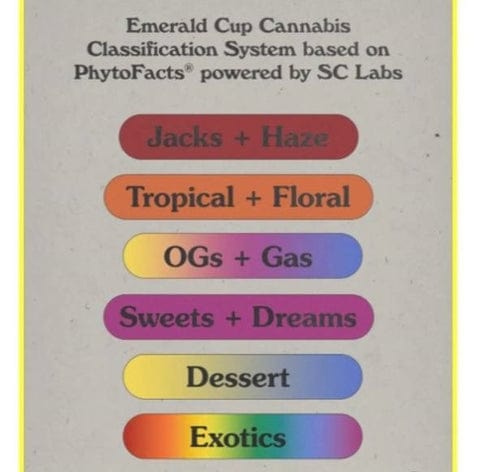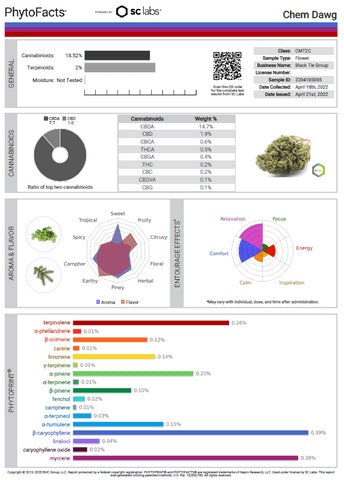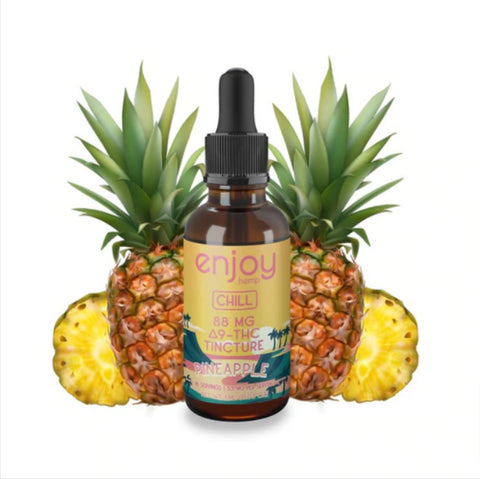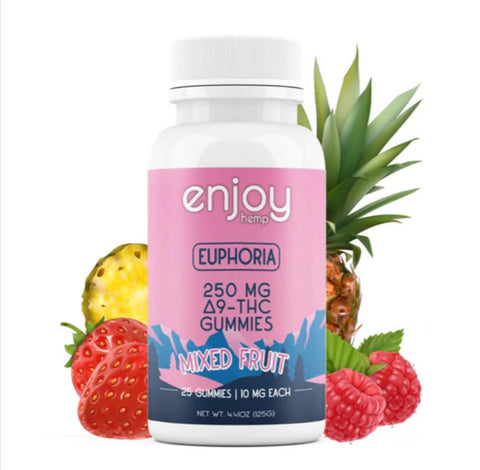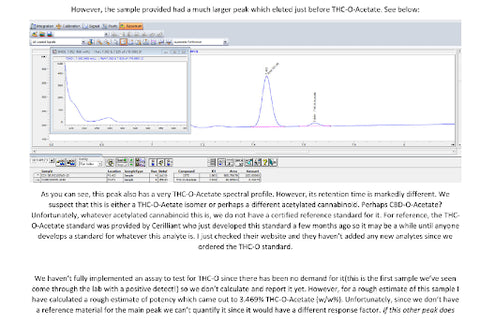OG + Gas Classification
By now, you should be aware of the new PhytoFacts® cannabis classification system that has been introduced for a more accurate measure of quality. If you aren’t aware of it, then go ahead and read our previous blog. This article aims to cover the OGs + Gas class and provide customers with a clear and concise roadmap.
What is the “OGs + Gas” terpene class?

As you can see, this class has a few notable qualities - specifically the fact that it is classified as a ‘hybrid’. Hybrids, or hybrid strains, were primarily known to contain Indica and Sativa genetics in the old classification system. Indicas, known for their effects on the body, and Sativas, known for their effects on the mind, can be combined to make a strain that provides physical and cerebral reactions. The best of both worlds, if you will. However, with the new classification system, there’s much more to it than just being a ‘hybrid’.
This class has been linked to tasting notes of gas, fuel, sweet, citrus, and pepper. The shifting codominance of limonene, myrcene and caryophyllene contribute to the overall effects that are said to be felt. The terpenes are the biggest contributor, which we will cover in our phytolab reports for our strains classified as OGs + Gas.
From the list of common cultivars are strains that we stock, and have tested with the updated system, as you can see below:
Strain 1: Chem Dawg
This strain is a standout among our customers. The medium-sized buds are dense and have a mix of bright and dark green tones. With a blend of green accented by dark reddish-orange hairs and a plenty of trichomes, the appearance differs slightly from that of hybrid or pure Indica lineage. The aroma is peppery, gassy, and deep and strong, akin to that of THC cannabis. Customers may feel their senses sharpen as this midday strain becomes more constructively intellectual and introspective in the proper environment. Chem Dawg (pronounced "kim") is a very social strain, perfect for catching up with friends while remaining calm and free of couch lock. Its ability to enhance sensory experiences also makes it ideal for creative projects. We recommend learning more here.
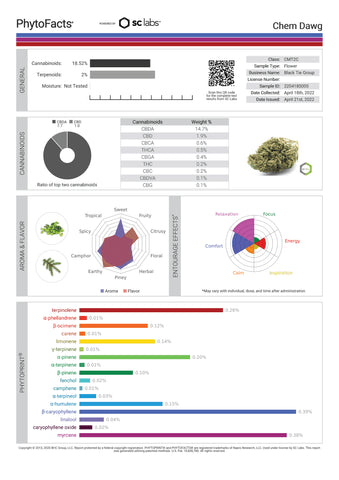
The dominant terpenes:
- Myrcene: A terpene consistent with the OGs + Gas class is myrcene. Myrcene is known for its sedative, 'couch-lock' effects, myrcene helps calm the mind and body by boosting the production of mood-regulating neurotransmitters dopamine and GABA. It can also help relieve pain and relax muscles, which helps ease the bodily discomfort that often accompanies stress - which explains why this class is associated with relaxation.
Myrcene gives our cannabis strain a mildly sweet flavor profile and provides scent notes that are spicy, earthy, and muskiness - which can be seen in the report for ‘Chem Dawg’.
-
b-Caryophyllene: β-Caryophyllene is generally the most abundantly produced terpene in Nature. Over the last decade, it has gained scientific attention after discovering that it can directly activate cannabinoid receptors. Basically, the β-Caryophyllene terpene acts as a cannabinoid.
In our Chem-Dawg strain, beta-caryophyllene most likely contributes to euphoric relaxation and creates the cozy, relaxed, happy mood often associated with some cannabis varieties - and specifically explains the uplifting feeling linked with the OGs + gas class.
-
Terpinolene: Terpinolene, a terpene dominant in about one in ten cannabis strains, is recognized for its woody smell combined with floral citrus notes, which explains the overall contribution to the ‘Chem Dawg’ strain having high citrusy attributes, and explains the link to the OGs + Gas classification.
In our strain, terpinolene most likely contributes to cerebral stimulation and may create heightened energy and whizzing thought spirals often associated with some cannabis varieties. For some, this experience is positive, leading to further productivity and focus.
Minor Terpenes:
- Beta-Pinene: In cannabis, two of the most important terpenes are alpha and beta-pinene. As the name suggests, these create a pine-like flavor and aroma and are found in massive concentrations in pine trees. This terpene is actually one of the contributors to the gas-like aroma of the overall class.
- B-Ocimene: Ocimene is a terpene responsible for some of the sweet and herbaceous flavors of certain cannabis strains, and it can also add citrusy and woody undertones. It may also offer a wide array of medicinal properties and uplifting effects, consistent with the class.
Strain 2: Tahoe OG
This stunning Indica-dominant hemp strain is incredible, to say the least. The buds are medium in size and firm to the touch. A classic OG nose, covered with trichomes and releasing a harsh gassy fragrance. When you remove the lid from the jar, the smell is immediately noticeable, and it gets much better when you pinch the buds. The buds are sticky and fresh, with a CBDa content of over 16 percent. Providing a comfortable smoke with a smooth OG flavor in the beginning and a gassy finish. A small heaviness behind the eyelids and a noticeable mental influence are felt almost immediately. This strain is excellent for pain relief, stress reduction, and insomnia relief.
As you will find out from the report below, there aren’t as many high-concentrate terpenes as chem-dawg, but the strain still packs a punch. Get some Tahoe OG here.
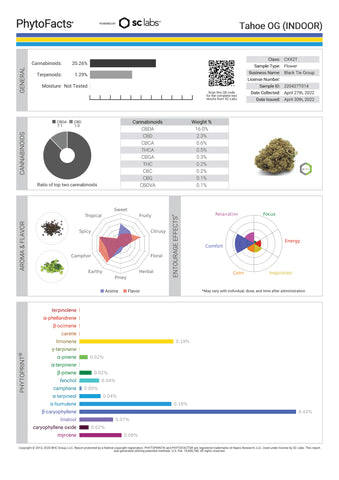
The dominant terpenes:
-
b-Caryophyllene: As we have already described above, caryophyllene holds the trophy for the most flair out of the terpenes. The terpene caryophyllene is present in many herbs and spices, including black pepper, basil, and oregano, and cannabis strains with high levels of it deliver a spicy, funky warmth to the nose, similar to cinnamon and cloves.
As you can see from the report, the strain being high in this terpene explains the spicy and citrusy tones as characteristic of the OGs + Gas class.
-
Limonene: Limonene is a terpene recognizable for its zesty citrus fragrance, primarily in lemon, but also in orange, lime, and grapefruit. Limonene is found in the peels of these citrus fruits and in many varieties of cannabis. Along with myrcene, limonene is one of the most abundant terpenes to occur in cannabis.
Limonene is considered an uplifting terpene capable of creating a sense of euphoria. This is likely because the terpene modulates neurotransmitters in the brain, particularly serotonin. This links directly to the strong uplifting and euphoric feelings associated with the overall class.
-
Humulene: Formerly known as alpha-humulene or alpha-caryophyllene — was first identified in the essential oils of Humulus lupulus, commonly called hops, giving it a distinctive bitter “hoppy” taste. It is also present in marsh elders and a wide array of herbs and spices, including; sage, basil, clove, black pepper, coriander, and balsam fir tree.
Strains high in humulene tend to have a relaxing effect with a chance of couch-locking the user on top of boosting creativity, relieving pain, and calming the mind, which is consistent with the effects of the OGs + Gas class.
Minor Terpenes:
-
Linalool: Linalool is found abundantly in nature, and it is widely used for many purposes. It is known for its calming effect and ability to bring elevated stress levels to almost normal conditions. It is frequently used in perfumes, cosmetics, soap, and essential oils therapy. Several flavored beverage brands even use linalool as an all-natural flavoring.
Despite Linalool being a minor in this strain, the report shows how the calming effects and overall flavoring contribute massively.
- Alpha-terpineol: or α-Terpineol, is terpene alcohol found in many natural oils such as pine and petitgrain (an oil from the bitter orange tree). It’s the most common terpineol isomer found in cannabis. This terpene complements its typical floral notes with a nice citrus-woody profile and lemon and lime nuances. It is excellent for citrus, tropical fruits, apple, tomato and coffee flavors.
As you should see from the lab reports, it’s clear how important each terpene is to a flower or strain's overall effects and classification. Not only do the terpenes contribute to the flavor profiles, but they stand to be the defining aspect of every class. This should go to show just how vital terpenes are, and why you should pay attention.






